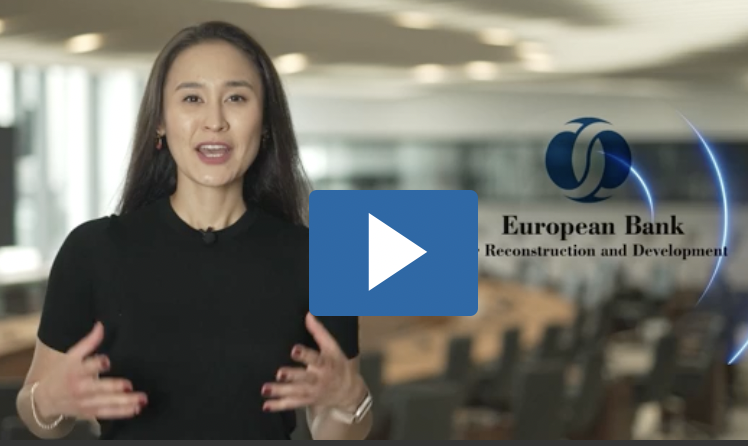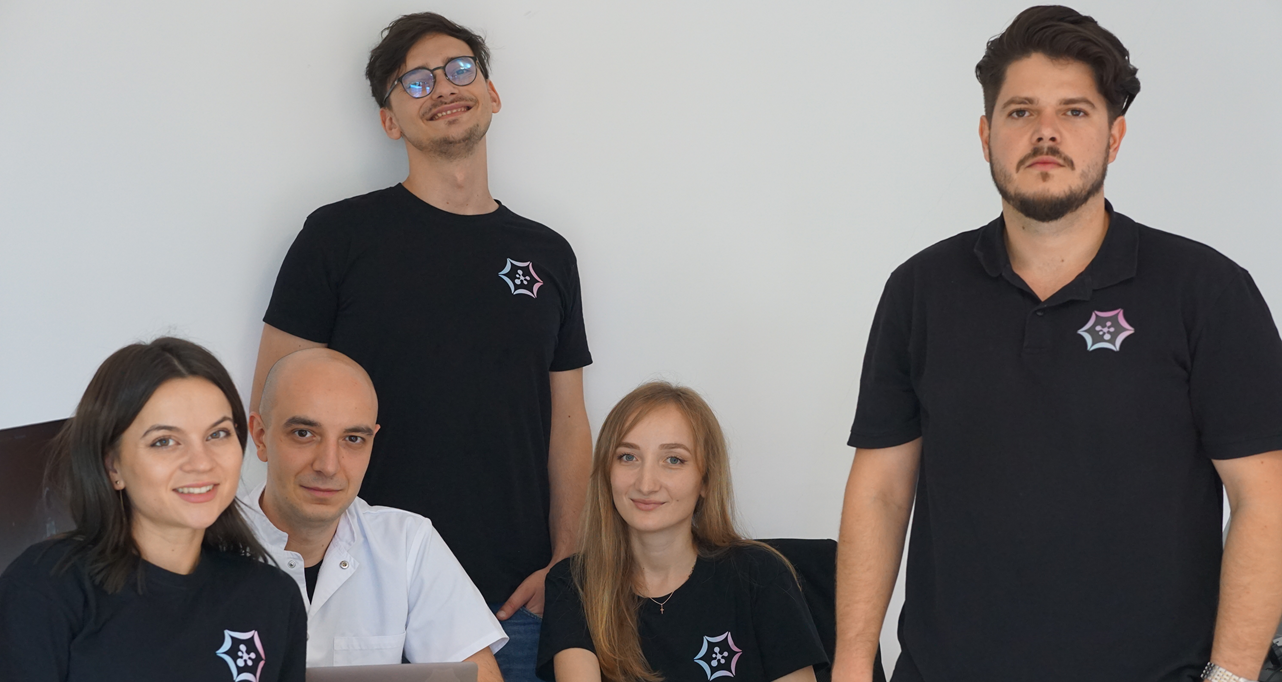Before administering radiotherapy, oncologists must meticulously outline tumours and surrounding organs in a process called ‘contouring’. This is critical to ensuring that radiation beams are directed at affected areas while minimising exposure to healthy tissue, but it was highly time-consuming until a young physician from Romania spotted an innovative way to accelerate the procedure. Just as AI was gaining momentum, Dragoș Dușe, then at the national Cancer Research Centre in Germany, began development on an algorithm that would later become patented, alongside three partners.
Today, Synaptiq is a youth-led, AI-powered Romanian healthtech company supporting over 80 per cent of clinics nationwide and expanding across Europe. With EBRD support, the group of entrepreneurs are accelerating cancer patients’ access to specialised treatment and drastically cutting delays in care.
Roxana Săbău, one of the four co-founders, enjoys recalling Synaptiq’s origins: “When you’re deep in the work for months on end, it’s easy to lose sight of your ‘whys’,” she says. “Conversations like these bring you back to that moment and help put things into perspective – especially when you’re going through a challenging time, like fundraising.”
Childhood friends Roxana and Dragoș both found themselves in Heidelberg at the same time, her studying and him working on cancer research. With a background in AI – despite its nascency – he began designing a solution for an AI algorithm to automatically contour healthy organs at risk of radiation exposure. This innovation aimed to save many hours by replacing the laborious process where oncologists outline tumours on 2D CT and MRI images before mapping them onto 3D models.
Building the foundations
Back in Romania, the deep work began. Dragoș set out to find talented individuals to join his ambitious venture. He reconnected with Roxana, who soon brought in a skilled colleague she had been working with, Diana. Together, they began crafting a business plan and scouting top talent on LinkedIn to complete the founding team. They joined startup accelerators and initiated early discussions with potential investors. Shortly after securing their initial funding, they hired engineers - whom the team proudly refers to as “true machine learning Olympians” - and onboarded a medical team that later played a crucial role in shaping the quality of the software.
“Dragoș was enthusiastic and deeply committed,” explains Roxana. “He had the passion and drive of an entrepreneur who was on the edge of a breakthrough. One conversation and I was in.”
Before the technical team came onboard, Dragoș was already exploring the backend architecture, experimenting with the foundations and defining how everything should work. While there was no frontend or visual demo yet, his clear vision and ability to articulate the product convinced early investors of the idea’s potential.
The Synaptiq team attended one of the largest radiation therapy conferences in Europe with just two banners, a functioning backend and a demonstration game. Contours were displayed side-by-side: one created by their AI, the other drawn manually. The result revealed the AI one to be more accurate. But doctors were nevertheless apprehensive, and many were sceptical or even dismissive of the idea.
Yet when they returned to the same conference the following year, suddenly the tone changed. Their booth sparked curiosity, questions and real interest. The conversation around AI in healthcare had begun to shift.
A pivot in strategy
“Five years ago, doctors were really sceptical about applying AI in medicine,” Roxana recalls. “But as the AI boom took off, something changed. Suddenly, doctors and hospitals began actively seeking AI-driven solutions in healthcare. And that’s when we realised we needed to act fast.”
When they noticed competitors tackling organ-at-risk contouring, they shifted their strategy to focus on tumour contouring. Whereas organs typically have consistent shapes and locations, making it easier to train AI to recognise and outline them, tumours vary in size, shape and location, making them far more difficult for AI to accurately delineate.
With grant funding, Synaptiq recently launched and patented a prompt-based AI contouring assistant: the doctor contours the tumour on just one CT slice, and the AI automatically propagates the contour across the full 3D structure.
An introduction to the EBRD’s office in Romania led to the group applying for a medical consultancy project. With support from the Bank and its Small Business Impact Fund*, Synaptiq received expert assistance to curate a specialised database which they used to train the algorithm for breast contouring on CTs and head and neck contouring on MRIs.
More recently, Synaptiq joined the EBRD’s Star Venture programme for high-tech startups. The team is energised and well prepared for what lies ahead. They are in the final stages of certification, forging new relationships with clinics across Europe, and actively fundraising to expand across Europe.
Looking back, Roxana is amazed at how the team came together: “We all have such different personalities, yet when we’re together, we click,” she says. ”We had very little funding at the start, yet we managed to launch a product that our competitors needed millions for.”
By solving a problem others avoided, they not only built cutting-edge technology but reshaped how clinicians interact with it. As they continue expanding across Europe, their focus remains unchanged: precision, strategy and placing tools like AI at the service of doctors saving lives.
*The Star Venture programme is supported by the EBRD Small Business Impact Fund (donors include Italy, Ireland, Japan, Luxembourg, Norway, South Korea, Sweden, Switzerland, TaiwanBusiness - EBRD Technical Cooperation Fund, the United Kingdom and the United States of America).




